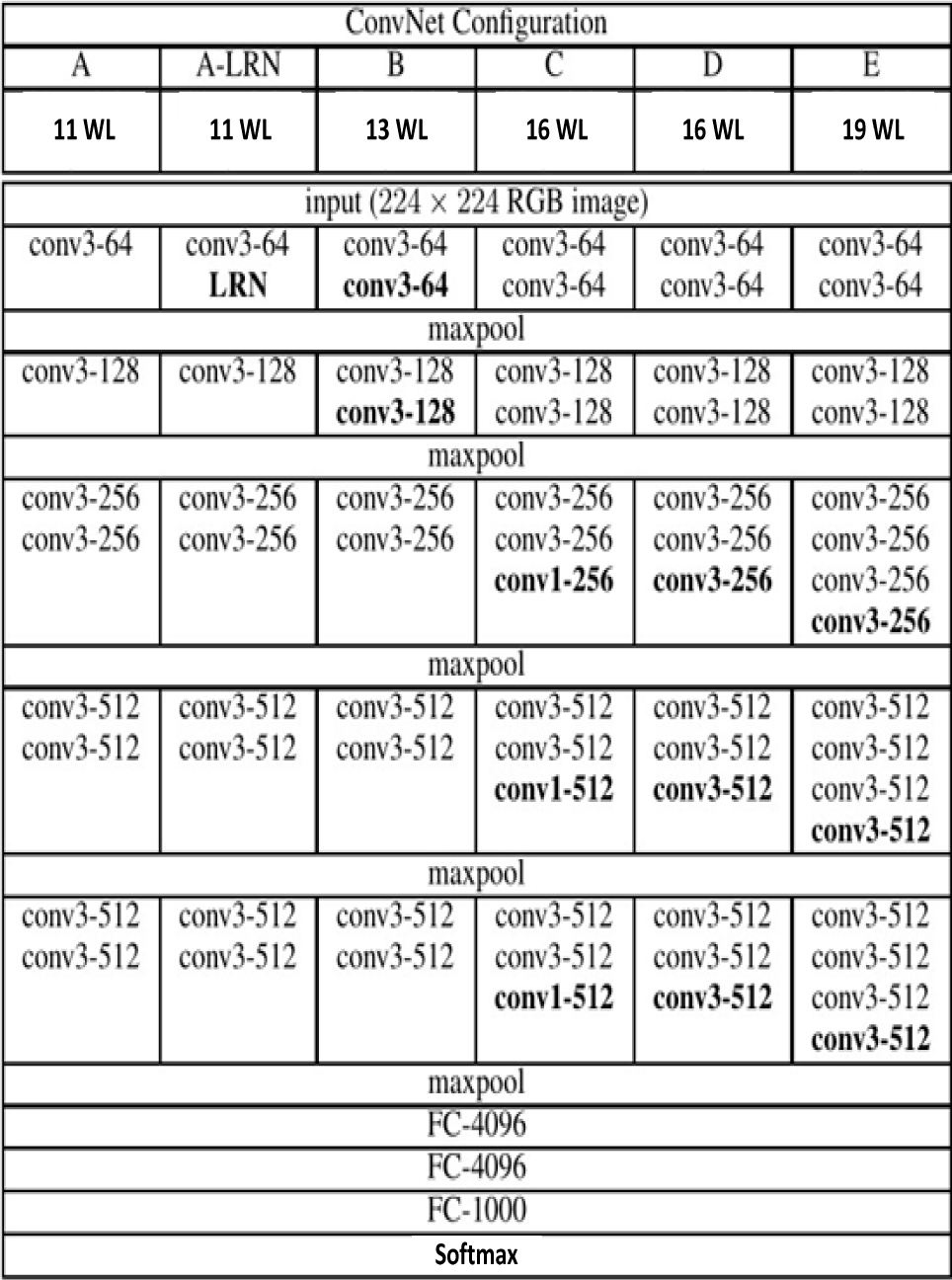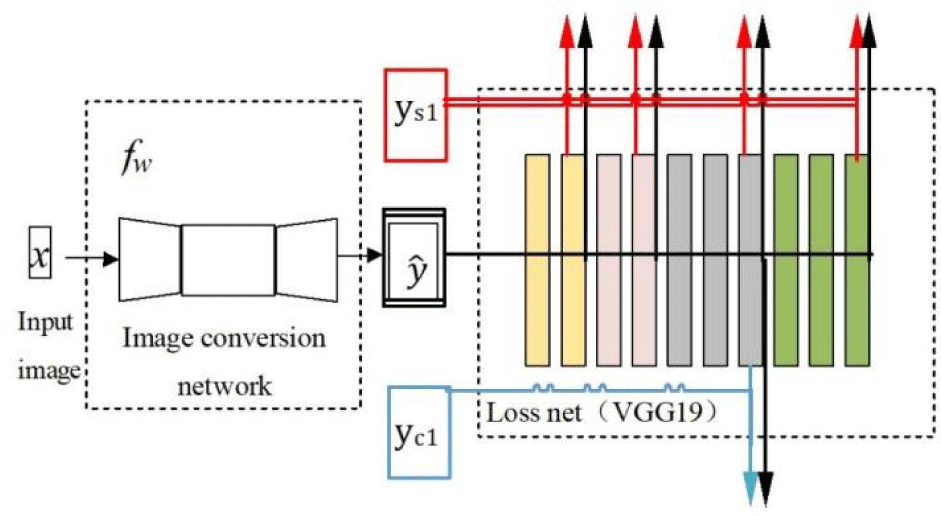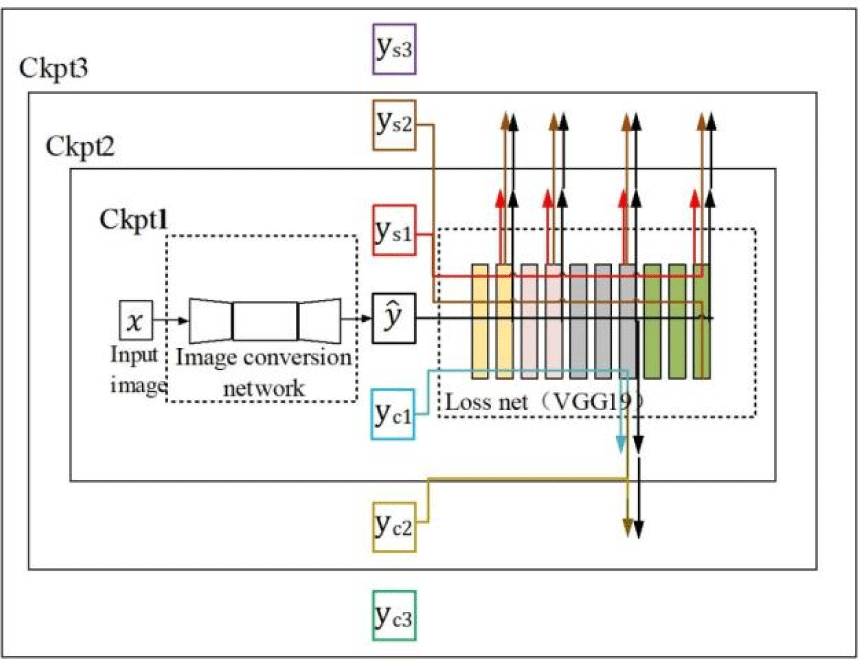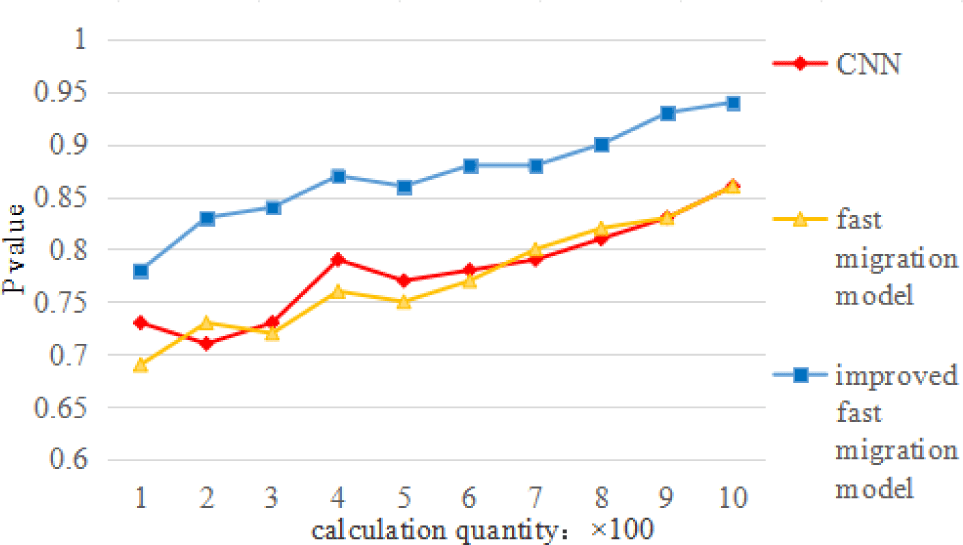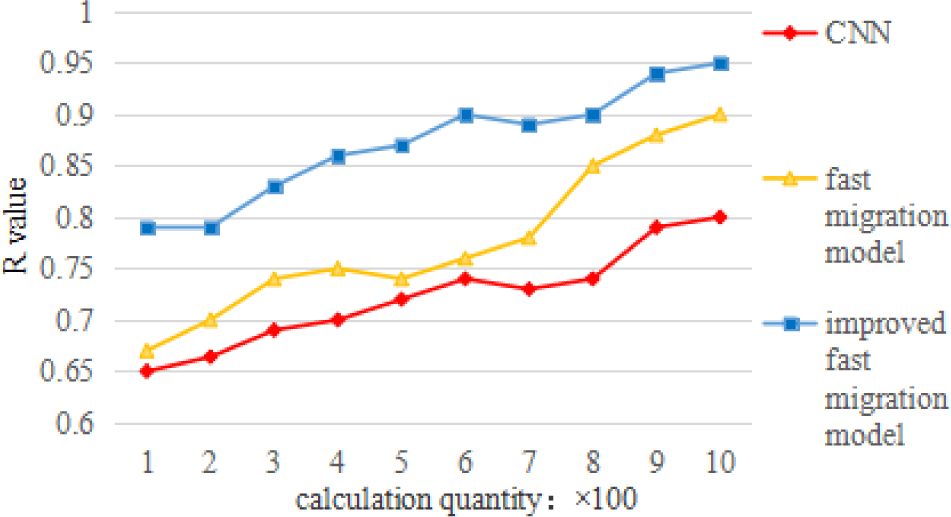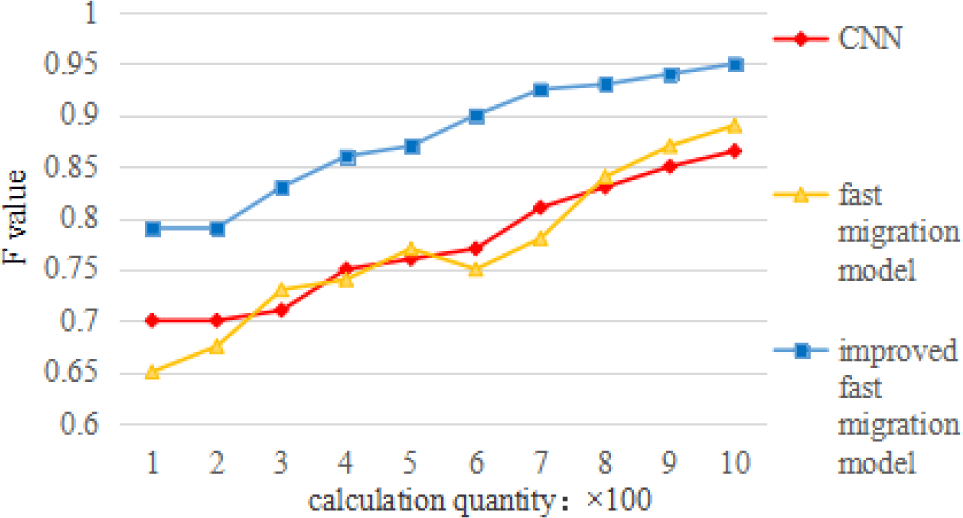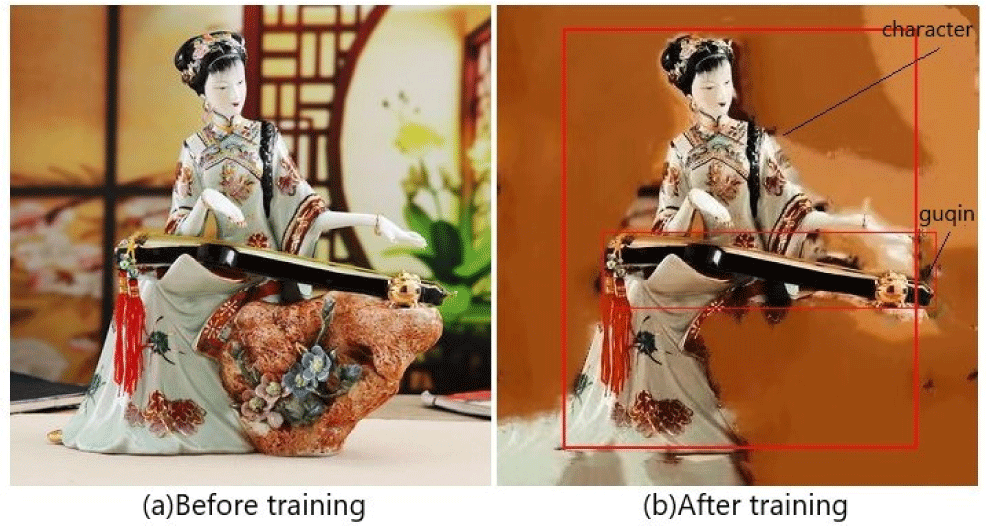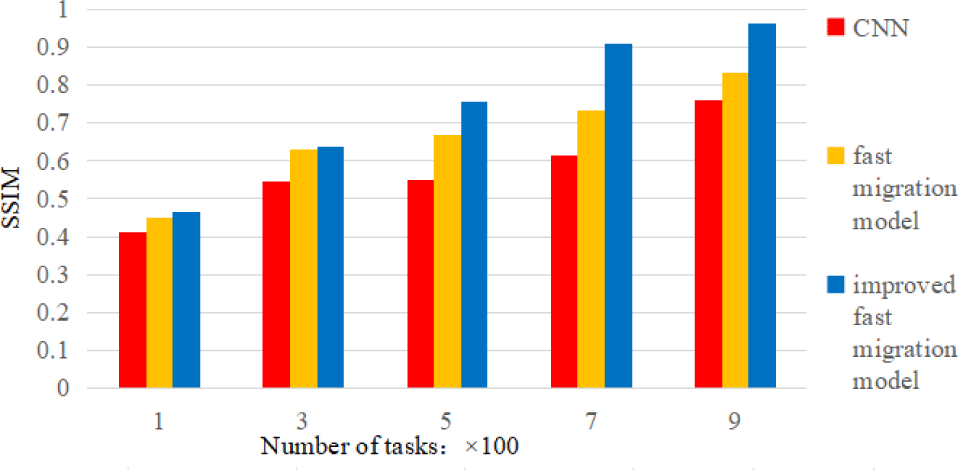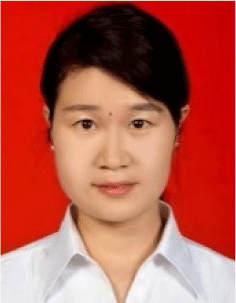I. INTRODUCTION
Landscape is the green lungs of cities, not only supplementing the natural landscapes that people lack in their daily lives, but also providing places for leisure and entertainment. The acceleration of the urbanization process and the gradual improvement of people’s living standards have put forward new contents for landscape design. Human beings have entered a new era of rebuilding beautiful and living environment with the scale of beauty [1]. Studying how to apply the laws of beauty to create a beautiful environment has become an important topic for people to pursue a higher and richer spiritual life. The beauty of gardens is a form of gardening that exists objectively and is a materialization of human thinking in long-term social practice. Therefore, the standard of garden beauty is also objective, determined by the objectivity of garden beauty [2]. Exploring the specific application of landscape aesthetics in design can improve the overall artistic level of garden construction, thereby meeting the needs of various groups of people for spiritual and cultural life.
Ceramic is a collective term for pottery and porcelain, a type of material and product formed in human production and life [3]. The definition of ceramics is a hard substance formed by using minerals such as clay as raw materials, which are formulated, crushed, and shaped, and then subjected to a series of physical and chemical reactions after high-temperature firing. There are many forms of daily and artistic ceramics with high practicality and partial appreciation, making them a model of the combination of industry and craftsmanship. Against the backdrop of people’s increasing material and cultural needs, people’s demands for ceramic art and crafts are also increasing [4]. As an outstanding representative of arts and crafts, ceramics often have their own unique features in terms of appearance, composition, craftsmanship, color, and other aspects. Especially ceramic artists use image content to express their attitude towards life and pursuit of art. So, in ceramic decorative patterns, their materials are becoming increasingly rich, their content is becoming more diverse, and their styles are becoming more distinctive [5]. In addition to the common figures, animals, plants, and landscapes in daily life, decorative patterns also incorporate modern life elements with modern expression techniques, highlighting the new vitality of ceramics as a traditional handicraft in the new era. In today’s society, ceramic products with unique artistic styles and reflections of social life are often more favored by people. With the continuous growth of people’s spiritual pursuits, more and more people are pursuing personalized experiences, attempting to integrate different artistic styles to achieve new artistic effects and enhance people’s sensory experience [6]. Therefore, we can try to intersect the traditional art field with the modern technology field, in order to meet the contemporary people’s pursuit of art while also achieving the goal of promoting the development of ceramic art and culture.
The application of ceramic art is an important component of landscape design, which can be reflected through principles such as the beauty of ceramic in landscape design. Good landscape design can enhance people’s aesthetic experience and also provide psychological relaxation [7]. The application of ceramic art in gardens can enrich people’s aesthetic feelings. At the same time, utilizing the maximization of the beauty of ceramic art to improve the design quality of landscape has a profound impact on the design practice of landscape, as well as the construction and development of landscape. Therefore, the application of ceramic art is an inevitable and very important aspect in landscape design. Identifying the mutual relationship between the two can provide corresponding theoretical basis and practical guidance for the construction and development of landscape, and create landscape with rich connotations, high quality, and highly loved by people.
Artificial intelligence, as one of the most promising scientific and technological advancements, aims to enable machines to think like humans and simulate their way of thinking to complete tasks. Artificial intelligence is a key force leading innovation, creating significant opportunities for every industry [8]. Deep learning has achieved certain results in the study of ceramic art beauty under its background. In addition, device safety in applications also needs to be considered [9]. Therefore, by combining artificial intelligence technology with traditional ceramic recognition problems, the problem of non-quantifiability and non-repeatability in traditional ancient ceramic “eye recognition” can be solved. Artificial intelligence and related technologies are a type of complex work that is completed by humans through machines instead of humans. In recent years, they have developed rapidly and have played a role in accelerating assistance in many traditional industries. Due to the development of related technologies such as deep learning and computer vision in the field of autonomous driving, the complete realization of autonomous driving is not far away [10]. Face recognition has been widely applied in security, financial payments, and other fields [11]. The identification of pests and diseases in apples, wheat, and more crops, as well as yield estimation, have been widely applied in smart agriculture [12]. And artificial intelligence and its auxiliary technologies have also been widely applied in fields such as smart transportation, smart healthcare, security, and more [13-14].
This article applies the research results of ceramic beauty, aesthetic research, landscape design, artificial intelligence and other related theories, and applies some of these theoretical viewpoints to the study of landscape design. Through literature review and artificial intelligence technology, the aesthetic understanding and recognition of ceramic art are applied to the exploration of landscape design, exploring the mutual connection between the two, and exploring landscape design strategies that meet people’s aesthetic and needs. A ceramic recognition method supported by artificial intelligence and its auxiliary technology is proposed to preliminarily achieve intelligent recognition of ceramics. The significance of this study lies in providing new methods and routes for landscape design and beauty value recognition. The main work and structural arrangement of this article are as follows.
-
(1) In order to apply the aesthetic understanding and recognition of ceramic art in landscape design and ensure the authenticity and reliability of the analysis results of ceramic aesthetic features, this article proposes artificial intelligence and its auxiliary technologies as support to achieve intelligent recognition of ceramics. It introduces the traditional models CNN and VGG networks, analyzes the characteristics of the fast migration model, and proposes the improved fast migration model.
-
(2) Based on ceramic images as the research dataset, this article conducts experimental research analysis and detailed testing, analyzes and compares the performance advantages of various models through indicators. Experiments have shown that the improved fast migration model has achieved good results in maximizing the aesthetic appeal of ceramic art application, thereby verifying its effectiveness and practicality in maximizing the aesthetic appeal of ceramic art application.
The remaining part of this article consists of four parts. The second part is related literature. The third part provides a detailed introduction. The fourth part analyzes the proposed algorithm and its effectiveness through experiments and indicators. Finally, the main research content and conclusions of this article are summarized.
II. RELATED WORK
Landscape ceramic design is a relatively new concept, which not only belongs to the meaning category of garden landscape, but also includes the idea of ceramic art design. Currently, there is not much research on the professional field of combining landscape architecture with ceramic, but scholars’ research on the design theory of landscape planning and ceramic art has certain reference value for this study.
There were many studies on digitization and retrieval of ceramic. Lin et al. [15] segmented digitally archived porcelain images to obtain four texture features. The main ceramic texture feature segmentation results were obtained using digital image processing methods such as principal component analysis (PCA). This method was a specialized segmentation optimization and exploration for ceramic images, which established a clear foundation for digital museum administration and texture feature retrieval of porcelain. In addition, some scholars had also studied the form of landscape space. For example, Tang analyzed the space form of the old town of li jiang from two different perspectives: “top-down dominant factors” and “bottom-up organizational process”. He believed that the landscape space of the ancient city mainly consisted of architectural space, water system space, street space, greening space, node space, and overall space.
Cui et al. [16] through the combination of digital image processing methods and pattern recognition technology, conducted in-depth discussions on the automatic classification, recognition of blue and white porcelain decorative patterns. And he realized the automatic classification of blue and white porcelain decorative patterns by using K-nearest neighbor classification. But if there were many ceramic features or the sample size was too large, the calculation speed was relatively slow. Ma et al. [17] introduced word weight into the digital management and protection of blue and white porcelain cultural relics, and proposed a weighted optimization algorithm. After classifying the words, blue and white porcelain could be retrieved through text and content fusion. Yang et al. [18] specified the structural data of ceramic ware, and set up a database of ceramic ware construction. Nevertheless, the amount of data was little. Lu et al. [19] altered the relatively single and fuzzy description of bowl- shaped features. This method had a single category of device types and no generalization characteristics. Guo et al. [20] proposed a machine detection method. It had certain reference significance for the restoration of a number of ancient ceramic relics.
Zhang et al. [21] aimed at the image features of blue and white porcelain inscriptions, realized the segmentation and recognition of Blue and white porcelain inscriptions by convolution neural network and handwritten Chinese characters, and realized the preliminary recognition of ceramic inscriptions. However, the recognition method of Chinese character recognition after segmentation of the inscription recognition image had obvious limitations. Li et al. [22] developed and designed intelligent tableware based on digital image processing technology, introduced the digital image calibration principle and sampling quantization method used in intelligent tableware. Among them, the development of this creative product not only brought convenience to daily use, but also symbolized cultural innovation. Dias et al. [23] designed a flower recognition technology that was resistant to clutter and light changed through methods such as computer vision, and proposed a pre trained convolutional neural network structure to adapt to flower sensitivity detection, effectively improving apple production efficiency. Alex et al. [24] proposed a new method by manually defining labels or semantic segmentation. This was a content aware generation method that had interactivity and provided guidance for the generated image results, which to some extent helped to improve image quality. Cho et al. [25] proposed an end-to-end image translation method that used the method to reduce time costs and parameter count. Through extensive experiments, it had been proven that the combination of this method and generative adversarial networks improved computational efficiency and image quality. Rong et al. [26] applied deep learning to food safety protection and detection. In response to the irregular shape and complex features of foreign objects in walnuts, convolutional neural networks were used to achieve automatic image segmentation to detect related foreign objects. This solved the problem of aggregation between walnuts and foreign objects in actual images and achieved real-time detection.
III. RESEARCH ON CERAMIC ART UNDER THE BACKGROUND OF ARTIFICIAL INTELLIGENCE
CNN is one of the commonly used neural networks with distinct characteristics. It can attempt to generate its input and output again. It has a hidden layer inside and can represent the original input information by generating encoding [27]. The network mainly consists of two parts, the encoding function h=f(x) and the reconstructed decoding function r=g(x). By adding constraints, automatic encoders are often designed as structures that do not perfectly replicate inputs similar to training data, and these constraints force the model to prioritize different aspects of the input data, thereby learning useful features from the data.
The training algorithm of the CNN is still consistent with the traditional back propagation (BP) network training method. Below, we will analyze the two stages of training.
-
(1) The first stage is forward propagation.
-
a. Firstly, it extracts (Xp,Yp) from the input dataset, and then sends Xp to the input end of CNN, where Yp is used in the second stage.
-
b. Then, Xp as the input layer data will pass through the C1/S1/C2/S2/F/O layers, and after calculating each layer and weight parameters, the final output will be obtained. From a functional perspective, in this stage, the data undergoes layer by layer function transformation from the initial input layer to the subsequent layers, which means that transfer calculations are continuously performed between the various layers of the formed CNN. Usually, the input is multiplied by the Wi weight parameter matrix of each layer, as shown in Equation 1.
-
-
2) The second stage is backward propagation.
-
a. The key to this step is to calculate the Op-Yp value, which is the difference between the actual output value and the sample label value.
-
b. Within the range of training iterations in the program design, the model will be trained using layer by layer backpropagation calculations, which can include minimizing error methods, etc. The calculation results will continuously modify the weight parameter matrix between levels.
-
CNN were one of the first deep networks to be effectively trained using backpropagation. This is different from ordinary networks, which are considered to have failed on backpropagation networks. The reason may be that convolutional neural networks have much higher computational efficiency than general fully connected networks. Additionally, their contribution comes from the maturity of external hardware, which makes the application effect of CNN in multiple fields increasingly apparent. It can be seen that the goal of CNN is to learn features through continuous training and learning of sample data. It will try to avoid artificially designing features for extraction and promote end-to-end “black box” learning. In addition, in other areas such as speech recognition, CNN also has unique advantages in computing features. From the perspective of neuroscience analysis, the structure of CNN layout is already very similar to that of actual biological neural networks, and it will try to avoid the complexity of data reconstruction caused by a large number of feature extraction calculations and reclassifications. However, at present, fully connected networks that have been very familiar in the past often use data sets that are considered to work poorly and some basic activation function. The main obstacle on the long-term path of neural network research is the lack of confidence of practitioners in the success of neural networks, which is different from the excellent performance of modern deep network implementation. Fortunately, convolutional networks perform better and better after Lenet. In the past decade, many other CNN studies have also achieved significant success, such as facial recognition, paving the way for deep learning to be widely accepted.
CNN is a type of neural network specifically designed to handle data with a grid like structure. For example, the time series data or image data, which can be seen as a two-dimensional pixel grid. The network uses convolutional operations to replace the general neural network of matrix multiplication operations. On the development path based on CNN, models such as Lenet and VGG have shown good training and application effects [28].
In 2014, the VGGNets series of models named after the Visual Geometry Group of Oxford University were successively born. Models based on VGG structure have achieved good rankings in ImageNet Challenge [29]. VGG has multiple classic model versions, and its models are often seen in many application designs. From the perspective of its effectiveness, the operation is relatively smooth. And the result is a large use of continuous convolutional layers, which also makes its computational complexity unable to decrease. Among the four models, it has the largest storage capacity. However, the specific structural changes in its model are not significant, and its composition still follows the design philosophy of Alexnet, but the network structure is much deeper than the former. Convolutional layers can also perform more than one convolution operation. As the fitting ability of the model continues to strengthen, its recognition accuracy is also constantly improving. As shown in Fig. 1 [30], these VGGNet models have layers 11, 13, 16, and 19. After the convolutional layers, there are also activation layers and pooling layers. The commonly used ones are VGG16 and VGG19. From the graph, it can also be seen that the VGG19 network is the deepest, with 19 layers, consisting of 16 convolutional layers and 3 fully connected layers, and all the parameters contained therein can be trained. It adopts a small convolutional stacking method, and uses convolutional kernels with a size of 3×3, which not only reduces the number of parameters, but also improves the nonlinear expression ability, ensuring the effect of feature extraction. The VGG network has also proven that the depth of the network deepens and can better extract features.
The number in the VGG network name represents the total number of convolutional and fully connected layers in the network, excluding pooling layers. The VGG19 network structure is mainly composed of 5 convolutional blocks and 3×3 fully connected layers. Each convolutional block contains a convolutional layer, ReLU layer, and pooling layer, with a total of 19 parameter layers. The network uses 3 convolutional kernels, which can not only greatly reduce the number of parameters, but also retain the same receptive field. In addition, as the depth of the network continues to deepen, its feature extraction ability also continues to enhance.
The VGGNet models consist of two parts, convolutional layer and fully connected layer. Convolutional layers can extract image features, while fully connected layers are equivalent to the probability of converting the “features” extracted from the image into categories. After previous scholars’ exploration and experiments, it has been shown that expanding the depth of the network within an appropriate range can improve the performance of the network model. For example, the VGG16 model and VGG19 model, as the structural hierarchy of the VGGNet model deepens, the richer image features can be extracted. Therefore, the VGG19 model is used for the study of ceramic art beauty.
There are some differences between aesthetic research and the traditional approach of VGGNet. VGGNet is used to extract features from input images and then output categories. However, in the process of researching ceramic bea-uty, the input is image features. And the output images maximize the beauty corresponding to this feature. Through the input features, the original image corresponding to this feature is reconstructed.
The original image migration method combines content loss and type loss to obtain the total loss. It continuously optimizes parameters by minimizing total loss to ensure the final generated image effect. A slightly better performing CPU also requires thousands of iterations to generate a single image. And the entire training process requires gradual optimization of the generated image, which can take several hours or even longer. In order to accelerate the speed, improvements were made to the original migration model to obtain a fast image migration model. The migration process greatly reduced the image generation time by using the already trained model. The main reason for reducing the time is that the result image is not generated through gradual iteration of the image, but through a feedforward neural network. In this network, generating images only requires one calculation. The fast migration model is generally composed of two neural networks. As shown in Fig. 2 [31], on the left side of the model is an image generation network fw, which converts the input picture x into the output picture y by means of nonlinear transformation y = fw (x). Each time the loss function calculates li, which measures the difference between the output image ŷ and the target image yi. On the right side of the model is a loss network φ. This network is a convolutional neural network, in which the parameters have been determined after pre training, and the parameters are generally not changed throughout the entire training process. The image generation network is also a deep convolutional neural network.
The image generation network fw is a deep residual network, where the weight w is used as the training parameter to generate a certain type of image. It inputs an image and outputs an image, which is a process from image to image. This is equivalent to encoding the image first, and then restoring it to an image. Because the image is only calculated once in the generation network, the speed of image generation has been greatly accelerated. It does not have pooling operations and is mainly composed of three convolutional layers, five residual layers, and three deconvolution layers. The front part is downsampling, which extracts features from the image. The middle part is the residual network block, followed by upsampling, and at the end is a convolutional layer. In the down sampling, cubic convolution, normalization and Relu activation function are included. In oversampling, it includes two times of Relu activation function, convolution and normalization. At the end, there is a convolution, normalization, and tanh function. The residual network used in the middle can perform cross convolutional layer addition operations, which has the advantage of avoiding gradient vanishing. Relu activation function is used in the front, and Tanh function is used at the end to zoom the output image range to [0, 255]. Only the first and last layers in the entire network use the convolutional kernel of 9×9, while the other convolutional layers use the convolutional kernel of 3×3.
The image generation network structure fw is downsampling followed by upsampling. The advantage of this construction is that on the one hand, it can make the feature map in the network smaller, deepen the network, and reduce computational complexity. On the other hand, the range of the Receptive field of the characteristic map increases. The size of the Receptive field can be doubled by adding a convolution layer of 3×3, and the Receptive field increases with the same number of layers.
The loss network φ selects the VGG19 model, which is generally a VGGNet. In the loss network φ, the entire VGG19 network layer was not included. Because there is no need to use a fully connected layer, only the convolutional layer of the network structure is retained, which can reduce the number of parameters and unnecessary computing resources. In order to make the final training effect better, two perception loss function are set to measure the perception and semantic differences between images.
During the reconstruction process, the traditional pixel by pixel comparison method is no longer used for content feature loss, and advanced features extracted by VGGNet are used to represent feature loss. It initializes an image ŷ, and makes the content features of this image ŷ and the target image y as close as possible. It defines the difference between them using euclidean distance. In the lower layers of the network, the loss of content features is minimal, so the differences in images do not appear significant. In the higher layers of the network, the extracted features are the overall layout structure of the image. And the texture and color will be completely different from the original, making it very abstract when viewed directly. The extraction is shown in Equation 2.
During the reconstruction process, feature loss mainly involves obtaining information about the color, texture, and other aspects of the image. Let ϕj (x) represent the jth layer of network φ, and the input is x. The shape of the feature map is Cj × Hj × Wj, and is defined as the Cj × Cj feature matrix. The ϕj(x) is understood as a feature of the Cj dimension, and the size of each feature is Hj × Wj. Its expression is shown in Equation 3.
The total loss function, type loss ys, content loss yc, and their weights are added again. The formula is shown in Equation 4.
The original fast migration model only used one image as the target type ys1 and target content yc1, and feature extraction was only a fixed image. In real landscape design, it is possible to extract features of the same type of image, so that the generated ceramic art aesthetic research can be closer to the real style. In order to be more suitable for a certain type, we added other images of the same type to the model. Based on the previous model parameter training, we obtained the ckpt1 model, and continued to optimize the parameters using the target type ys2 and target content yc2 to obtain the ckpt2 model. Finally, we continued to optimize the parameters using the target type ys3 and target content yc3 based on the models ckpt1 and ckpt2 to obtain the final model ckpt3. At this point, the migration image is obtained by extracting several features of the same type. The improved network structure is shown in Fig. 3 [31].
The loss network φ also chooses the VGG19 model. To reduce unnecessary computation, only the convolutional layer is retained and the fully connected layer is deleted. Perception loss function is used to measure the perception and semantic difference of images. The features extracted by the VGG model represent feature loss. Firstly, we initialize an image ŷ, making it infinitely close to the first target image y1 of the target, and set the content feature extraction. The extraction formula is shown in Equation 5.
When selecting the second image and extracting content features again, content feature extraction is performed using the extraction formula shown in Equation 6.
Similarly, when continuing to select other graphs, the method for extracting content features is as follows. In feature extraction, ϕj(x) represents the jth layer of the network φ, and the input is x. The formula for the feature matrix is shown in Equation 7.
When selecting the first image of the same style, the loss of output image and target image is shown in Equation 8.
The regular term function remains unchanged, as shown in Equation 9.
The objective function for generating images at this time is shown in Equation 10.
When continuing to add the second image of the same style, the objective function for generating the image at this time is shown in Equation 11.
IV. EXPERIMENTS AND RESULTS
The experiment used MATLAB as the testing softw-are and Python as the development language for deep learning. When installing Python, Anaconda was chosen for installation. It integrates Python versions 3.6 and 3.7, inherits a large number of standard installation packages from scientific computing libraries, and can well meet the needs of third-party libraries. The proce-ssor is an Intel (R) Core (TM) i5-6300HQ CPU with 8GB of memory, and the operating system is running on a 64 bits Windows 7 operating system. To facilitate programming, PyCharm will be used as the compiler. The paper compares and analyzes the improved fast migration model with CNN and fast migration model. The evaluation indicators used in the model experiment in this article include precision, recall, accuracy and comprehensive performance indicators. Prepresents precision, R represents recall, A represents accuracy, and F represents comprehensive performance indicators.The corresponding expressions are as follows.
It is worth noting that TP, FP, TN and FN respectively are true positive, false positive, true negative and false negative. The application of ceramic art should be coordinated with landscape design in order to make the garden landscape more beautiful and pleasing to the eye. For example, when the overall focus of the landscape is on plants, ceramics should also use plant images. At this point, TP represents the actual need for plant samples in landscape design, and plant samples are also used for predicting ceramics. FP represents that landscape design does not actually require plant samples, but predicts the use of plant samples for ceramic applications. TN represents that landscape design does not actually require plant samples, and it is not the plant samples that predict ceramic applications. FN represents the actual need for plant samples in landscape design, but it is not the plant samples that predict ceramic applications.
SSIM is a standard for measuring the similarity of images. It has been found that human perception of images is highly structured, and this evaluation method performs well in image quality evaluation. Assuming two images m and n, where m refers to the original image and n refers to the trained image, their SSIM calculation is shown in Equation 16.
Where um and un are the mean values of image m and n respectively. σmn is the covariance. and represent the variance of m and n. c1 and c2 are constants that remain stable. When the value of SSIM is 1, it means that the two images are exactly the same [32].
The ceramic image collection in this article was collected from various museum collections as a scientific basis and data source for appraisal work. A total of 1046 ceramic images were collected, which is a commonly used large-scale image dataset. Among them, 732 images were used as the training set. 209 images were used as the validation set. The remaining images were used as the test set. In order to evaluate the effectiveness of the beauty of ceramic art analysis, detection, validation, and evaluation experiments are conducted on the dataset on the CNN, fast migration model, and improved fast migration model. By comparing the experimental evaluation results, the models are compared and analyzed. The experimental results recorded using MATLAB are shown in Figs. 4, 5, and 6, respectively.
In Fig. 4, the improved fast migration model performs well in the P value. It is in a higher position in the dataset, resulting in more accurate data detection and analysis results for the study of the beauty of ceramic art.
The improved fast migration model has demonstrated its superiority compared to traditional CNN and fast migration model. In Fig. 5, the recall rate of the improved fast migration model is relatively high. When analyzing ceramic images, the improved fast migration model can increase by 20.90% compared to CNN and 18.42% compared to the fast migration model. Therefore, the improved fast migration model has advantages in recall rate, thus studying the maximum beauty effect of ceramics and effectively applying ceramics in landscape design.
Through the comparison of algorithm applications in Fig. 6, the improved fast migration model steadily increases with the increase of the dataset. Compared the traditional algorithm CNN and fast migration model it can accelerate the convergence speed while reducing the training time. Four repeated experiments were conducted on each model to evaluate its effectiveness based on the average accuracy. The results are shown in Table 1.
| Model | Accuracy |
|---|---|
| CNN | 77.01% |
| Fast migration mode | 82.43% |
| The improved fast migration model | 94.87% |
From Table 1, it can be seen that the improved fast migration model can achieve high recognition accuracy in the input ceramic art images, which is significantly better than other models, with an accuracy rate of 94.87%. Therefore, in terms of accuracy, the improved fast migration model has obvious advantages due to its characteristics. At the same time, we input the image into the improved fast migration model, and the training results are shown in Fig. 7.
As shown in the comparison of the training results in Fig. 7, in the image analysis results, the core content such as character and guqin can be clearly seen, and the style is also relatively close to the original image, with a distinctive overall effect. Although the image lacks some background processing, it can fully reflect key features and aesthetics over all. The improved fast migration model has higher similarity and is closer to the real effect image.
An objective evaluation was conducted on the image results generated by the improved model and the results generated by the original fast migration model, as shown in Fig. 8.
The improved fast migration model has a relatively higher SSIM value and better similarity compared to the original fast migration model and CNN, so the improved model performs better in image beauty analysis. The improved fast migration model achieves feature extraction of ceramic art. And the experimental results show that it performs better than the original one, proving that the model can effectively extract features of ceramic art and perform beauty analysis.
V. CONCLUSION
With the development of society, the materials of ceramic patterns are becoming increasingly rich, the content is becoming more diverse, and the aesthetic sense is also becoming more distinctive. The extensive use of deep learning and machine learning methods has led to the transformation towards intelligence. This article proposes the improved rapid migration model for aesthetic analysis and feature extraction of ceramic patterns, and experimental verification of implementation methods, The experimental results show that the improved model is effective and progressiveness. The improved rapid migration model analysis process only takes a few seconds, solving the problem of long process time. The research on maximizing the aesthetic appeal of ceramic art application in landscape design has demonstrated the advantages of the proposed model, which has certain practical and theoretical significance. However, the experimental results of the improved model in this article still have shortcomings in areas such as ceramic line details and background processing. Therefore, in the future, we will incorporate structures for image segmentation into network models to design a better model.

